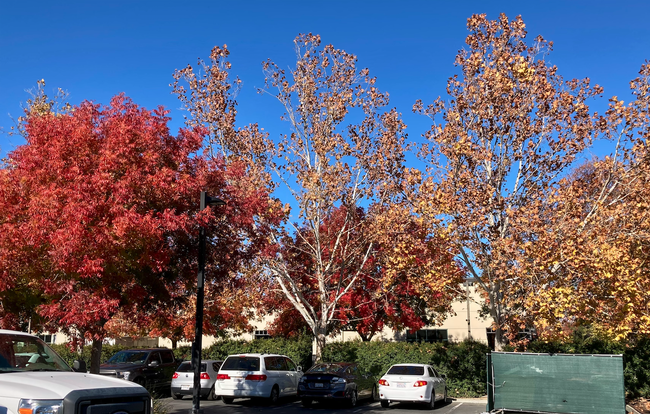Posts Tagged: fall
Monarchs on the Move...So Many Mysteries
Monarchs on the move...so many mysteries. Where do Western monarchs go after leaving their overwintering sites along coastal California in...
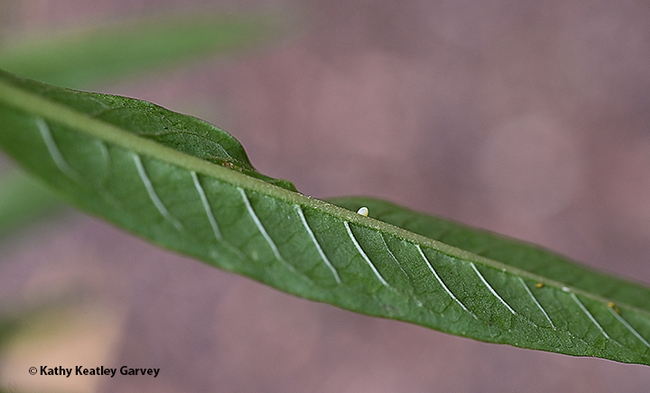
A tiny monarch egg. Image taken on Nov. 14, 2023 in a Vacaville garden. (Photo by Kathy Keatley Garvey)
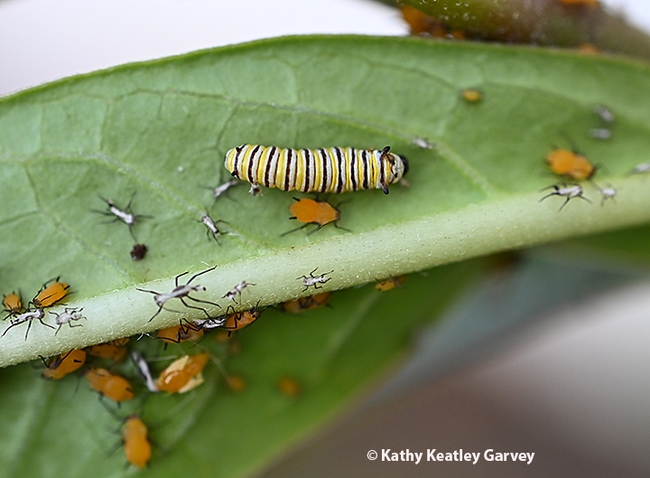
A monarch caterpillar sharing a milkweed leaf with aphids. This image was taken Nov. 15, 2023 in a Vacaville garden. (Photo by Kathy Keatley Garvey)
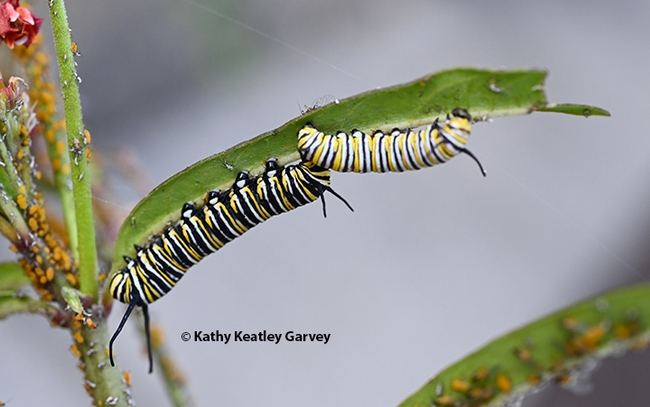
Two monarch caterpillars sharing a milkweed leaf. This image was taken Nov. 15, 2023 in a Vacaville garden. (Photo by Kathy Keatley Garvey)
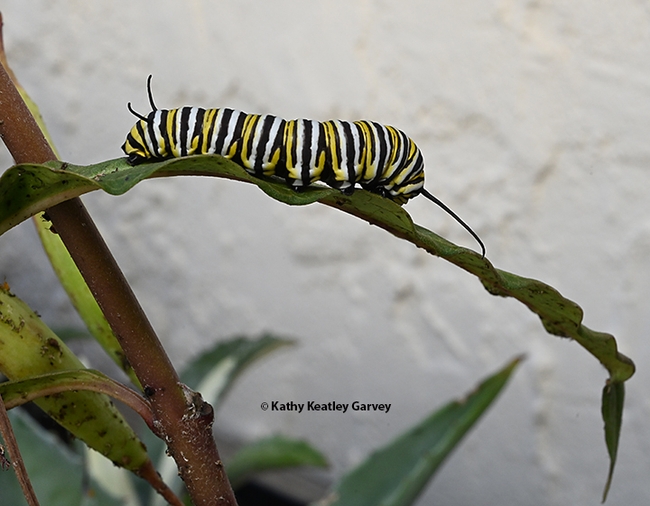
A very hungry monarch caterpillar on the move. This image was taken Nov. 18, 2023 in a Vacaville garden. (Photo by Kathy Keatley Garvey)
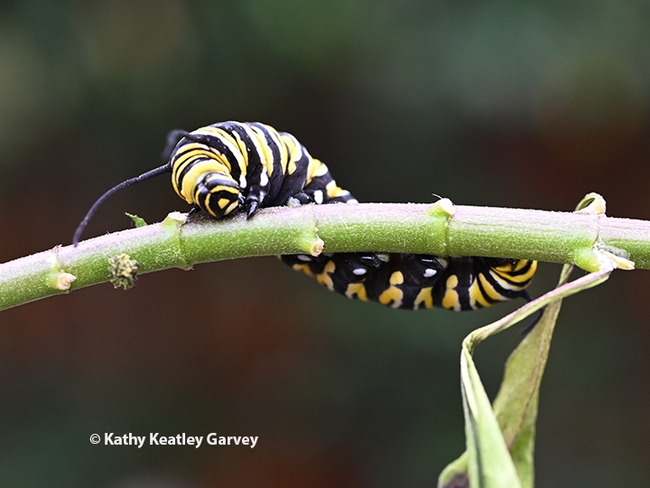
Hi, there! A monarch caterpillar faces the camera. This image was taken Nov. 14, 2023 in a Vacaville garden. (Photo by Kathy Keatley Garvey)
UC Davis Entomology and Nematology's Fall Seminars Begin Monday, Oct. 2
Conservation ecologist Paul CaraDonna, a research scientist at the Chicago Botanic Garden and a professor of instruction at...
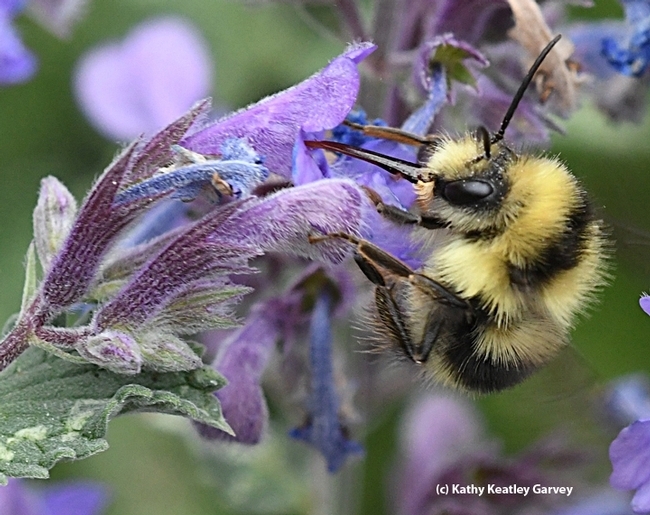
A plant-pollinator interaction: a black-tailed bumble bee, Bombus melanopygus, nectaring on lavender. (Photo by Kathy Keatley Garvey)
Three Key Dates to Add to Your Calendar
The Bohart Museum of Entomology at the University of California, Davis, has announced the themes of its fall open houses: Sunday, Aug. 27:...
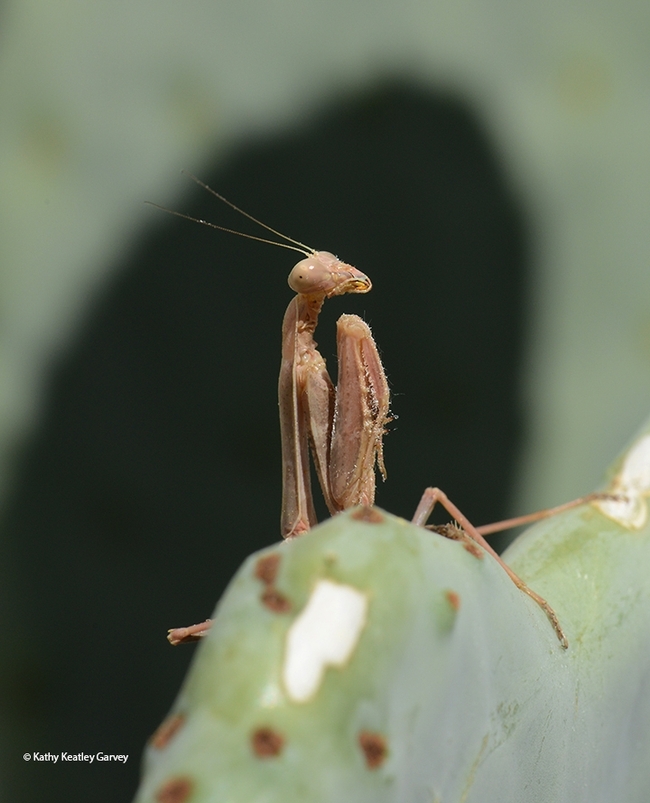
A predator, a praying mantis, Stagmomantis limbata limbata, waiting for prey. (Photo by Kathy Keatley Garvey)
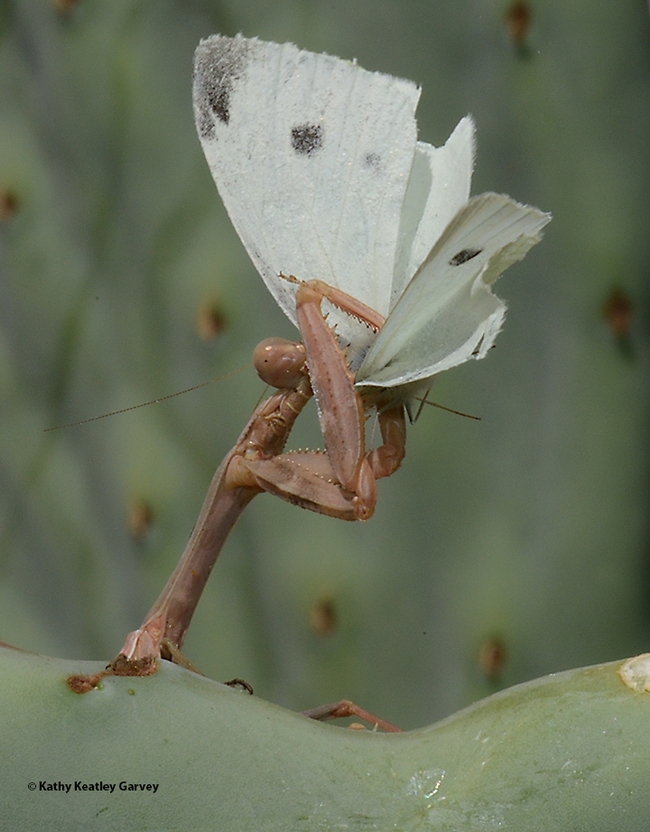
Gotcha! The praying mantis grabs a cabbage white butterfly. (Photo by Kathy Keatley Garvey)
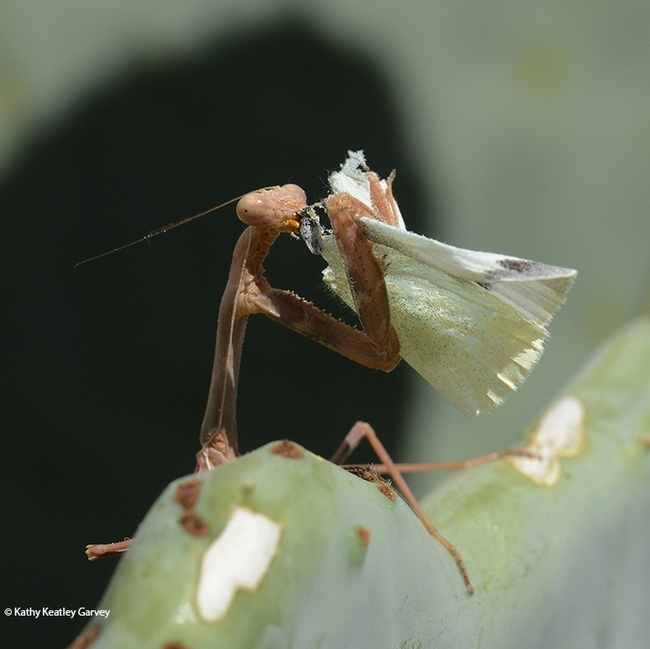
The praying mantis is hungry. (Photo by Kathy Keatley Garvey)
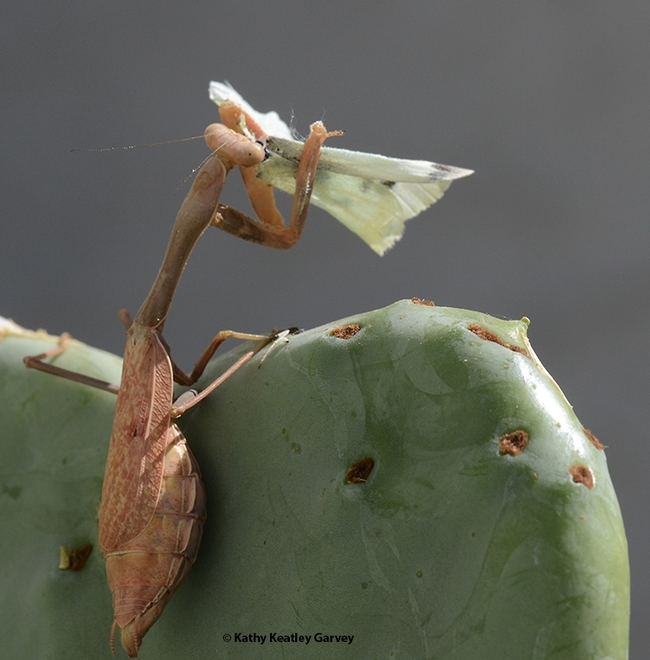
It doesn't take long. (Photo by Kathy Keatley Garvey)
Where do fall colors come from?
Did you ever wonder why trees "turn" color in the fall? The short answer: It's primarily a function of long, cool fall nights and short, sunny days.
The longer answer? Chlorophyll is responsible for the basic green color of leaves we see in spring and summer and is a necessary component of photosynthesis, which uses sunlight to manufacture sugar (food) that is stored during the dormant period of the year. Carotenoids produce yellow, orange and even brown pigments in crops such as carrots, squash, bananas and many ornamental plants such as daffodils and poppies. Anthocyanins are red and orange in color and are most linked to lavish displays of brilliant fall foliage. They also give rise to coloring of strawberries, plums and cherries.
Here's the kicker: While chlorophyll and carotenoids are present in leaf cell chloroplasts throughout the entire growing season, most anthocyanins are only produced in fall due to bright light and excess plant sugars within leaf cells.
So, in reality foliage doesn't "turn" orange or red at all. Carotenoids and anthocyanins are always in the leaves; they are simply unmasked once the active growing season is finished and chlorophyll is no longer produced. This happens when nights lengthen in fall.
Interestingly, the actual timing of color change varies across species and appears to be genetically inherited. The same species will exhibit a similar color scheme in cool temperatures in higher elevations at nearly the same time as it does in warmer lower elevation climates. The intensity can vary quite a bit however.
Where do temperatures enter the picture? Both the amount of color and the overall intensity of fall color is very linked to weather conditions that occur prior to and during the actual time the chlorophyll in leaves winds down. The most brilliant displays occur after several warm, sunny days and cool, crisp (above freezing) nights. This is because although lots of sugars are made in leaves during sunny daytime hours, the corresponding cool nights prevent the sugars from moving out. The amount of soil moisture also helps ensure that from year to year fall colors vary even in the same trees. So, either a late spring or a prolonged drought can both delay the display of fall color by a few days or even a few weeks.
What's the recipe for the most brilliant fall display? Most likely a warm, moist spring followed by a warm summer and sunny fall with cool autumn nights.
Although fall color is not nearly as spectacular in lower elevations of Southern California compared to other colder areas of the nation, the liquidambar or American sweet gum (Liquidambar styraciflua) offers some pretty impressive fall color and an impressive 300 to 400-year life span. (Did you know that liquidambar got its name because it at one time was a sought-after chewing gum for Native Americans?)
To help guarantee vivid colors for years to come, growers carefully propagate trees by cuttings to yield identical clones that will produce just as brilliant fall foliage as their parents. You may have come across the popular cultivar named Festival or even have one in your own yard. I like it because it stays more compact and columnar than most liquidambars. The downside? It is less cold tolerant than other liquidambars but does well in most warmer areas of Southern California.
The cultivar Moraine is broader and a better choice if one has adequate space for a shade tree; it is also adapted to cooler temperatures and it rewards homeowners and people passing by alike with beautiful, red fall foliage.
UC Davis Seminars: From Earwigs to Fruit Flies to Nematodes
A fantastic line-up awaits those eager to attend the UC Davis Department of Entomology and Nematology's in-person and virtual...
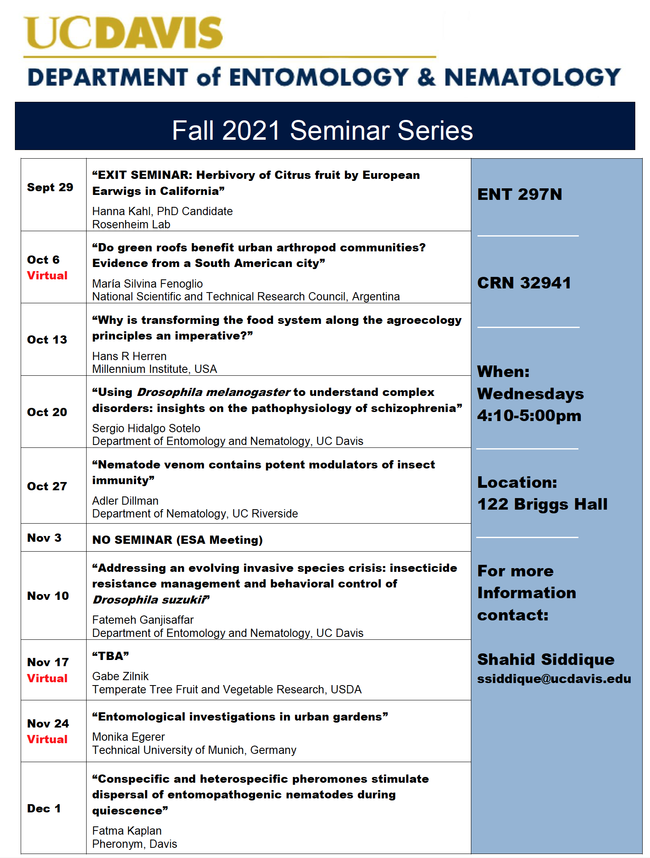
Screen Shot 2021-09-02 at 10.51.43 AM
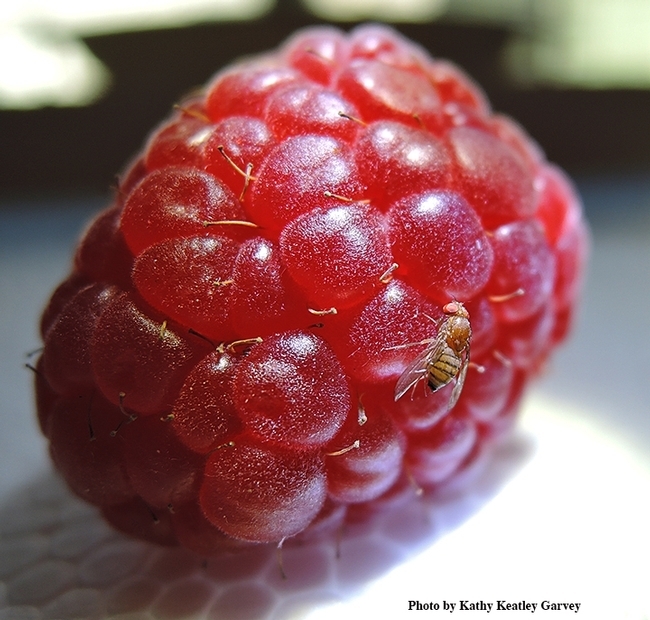
The Nov. 10th seminar will focus on controlling this pest, the spotted-wing Drosophila, Drosophila suzukii, shown here on a raspberry. (Photo by Kathy Keatley Garvey)


